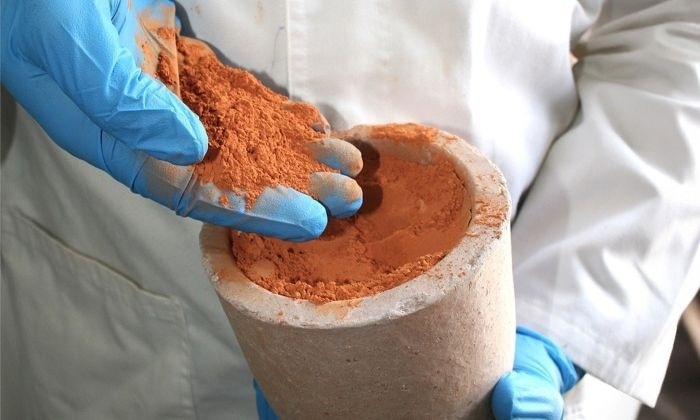Reviewed by Lexie CornerJun 5 2025
A study published in Construction and Building Materials reports that RMIT engineers have developed a method to convert low-grade clay into a useful cement supplement. This could help expand the use of more sustainable materials in construction.
 The combined clay mix, after being heat-treated, is ready for use as a cement supplement. Image Credit: RMIT University
The combined clay mix, after being heat-treated, is ready for use as a cement supplement. Image Credit: RMIT University
Cement production, a key part of concrete, contributes about 8 % of global CO2 emissions.
Replacing a portion of cement with clay can reduce environmental impact. However, high-grade kaolin clay, which works well for this purpose, is also in demand for use in ceramics, paints, cosmetics, and paper.
The RMIT team has now demonstrated that more affordable and widely available illite clay can be combined with low-grade kaolinite clay to make stronger concrete.
Tech Breakthrough Towards a Low-Carbon Future
The study outlines a method that blends low-grade illite and kaolin clays in equal parts and heats the mixture to 600 °C.
Processing the two clays together, rather than separately, was found to improve the material's performance in several ways.
According to Dr. Chamila Gunasekara, the project leader, low-grade illite clay usually does not bind well with cement and water. However, the joint heating process, known as co-calcination, significantly improves its ability to bind, also called pozzolanic reactivity.
Based on this approach, we are able to replace 20 % of cement usage using low-grade illite and kaolin combinations, while achieving even better performance of the yield product.
Dr. Chamila Gunasekara, School of Engineering, RMIT University
The amount of disordered material in the new clay blend increased by 18 %, which helped improve its strength and durability. The material also holds more water in a chemically stable form. This suggests better long-term reactions that help maintain the structure's integrity.
“Porosity is reduced significantly by 41 %, with its compressive strength increased by 15 %, where changes in the way iron compounds formed help create a tighter and more compact internal structure,” added Gunasekara.
These findings indicate that co-calcined illite–kaolin blends can perform as well as, or better than, typical kaolin-based alternatives.
Kaolin demand is gradually rising, with the market expected to reach US$6 billion by 2032. This research may also help create a market for illite clay.
Dr. Roshan Jayathilakage, the study’s lead author, noted that the technique is more energy efficient as well.
Since raw materials are processed together, it streamlines industrial operations and lowers fuel use compared to multiple calcination steps. This makes the method not only technically sound but also economically and environmentally scalable.
Dr. Roshan Jayathilakage, Study Lead Author and Research Assistant, RMIT University
New Computational Tool Accelerates Green Transformation
The research also includes progress in computational methods used in materials science.
The team worked with Hokkaido University in Japan to develop a computational tool for analyzing and designing concrete.
This method allows researchers to test how different activated clays perform in concrete mixtures. It provides detailed insights into mechanical properties, durability, and energy use - areas where earlier methods were limited.
Dr. Yuguo Yu from RMIT’s School of Engineering said the tool makes it easier to assess material performance, reducing the need for expensive lab testing.
By predicting how different clay compositions affect concrete behavior, engineers are able to better design energy-efficient mixtures tailored for local clay types and specific environmental conditions.
Dr. Yuguo Yu, School of Engineering, RMIT University
“This virtual tool could enable the construction industry to accelerate the adoption of eco-friendly materials, paving the way of greener transformation for a more sustainable future,” added Yu.
The RMIT team is now expanding performance testing in real-world conditions. They are also studying how different clay types and activation methods affect concrete properties at various scales. This work builds on collaborations with international partners, including the European Synchrotron Radiation Facility in France.
The study was supported by the ARC Industrial Transformation Research Hub for the Transformation of Reclaimed Waste Resources to Engineered Materials and Circular Economy Solutions (TREMS).
TREMS is led by Professor Sujeeva Setunge of RMIT. It brings together researchers and industry experts from nine Australian institutions, along with 36 partners from government, industry, and international organizations. The program focuses on reducing waste and recycling recovered materials for use in construction and advanced manufacturing.
Journal Reference:
Jayathilakage, R., et al. (2025) A combination technique to improve natural low-grade illite as supplementary cementitious material for concrete. Construction and Building Materials. doi.org/10.1016/j.conbuildmat.2025.141334.